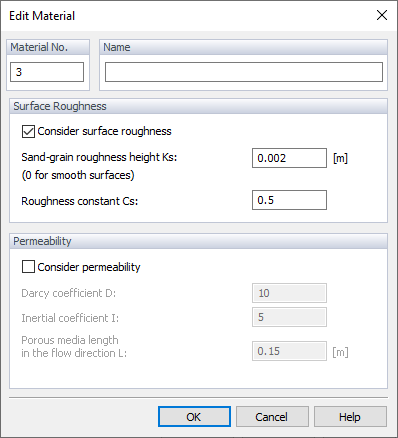You can use a material to assign a surface roughness to an entire model or to specific parts of it. It will affect the surrounding flow field. In RWIND 3, it is newly possible to set the permeability. For one material it is possible to only set surface roughness or permeability, not both.
To define a new material, open the Insert menu and select "New Material." You can also use the shortcut menu of the "Materials" item in the navigator.
Enter the "Name" of the material. To consider its specific surface roughness, select the check box in the "Surface Roughness Parameters" section. You can then define the Sand-grain roughness height Ks (the size of the sand grains) and the Roughness constant Cs. For more information on the surface roughness parameters, see Chapter Advanced.
In the "Permeability" section, you can consider permeability and set parameters. More about the permeability and how to set these coefficients can be found in the next chapter Permeable Surfaces.
You can then assign the material to either an entire model or to specific parts of the model, the "Zones" (see Chapter Zones).
If you have defined models or zones with different materials, the hierarchy of the surface roughness is as follows: The global roughness, defined in the "Simulation Parameters" dialog box, is applied to all objects unless it is overridden by the material properties of each model. The highest priority, though, is given to the zones with the assigned materials.

